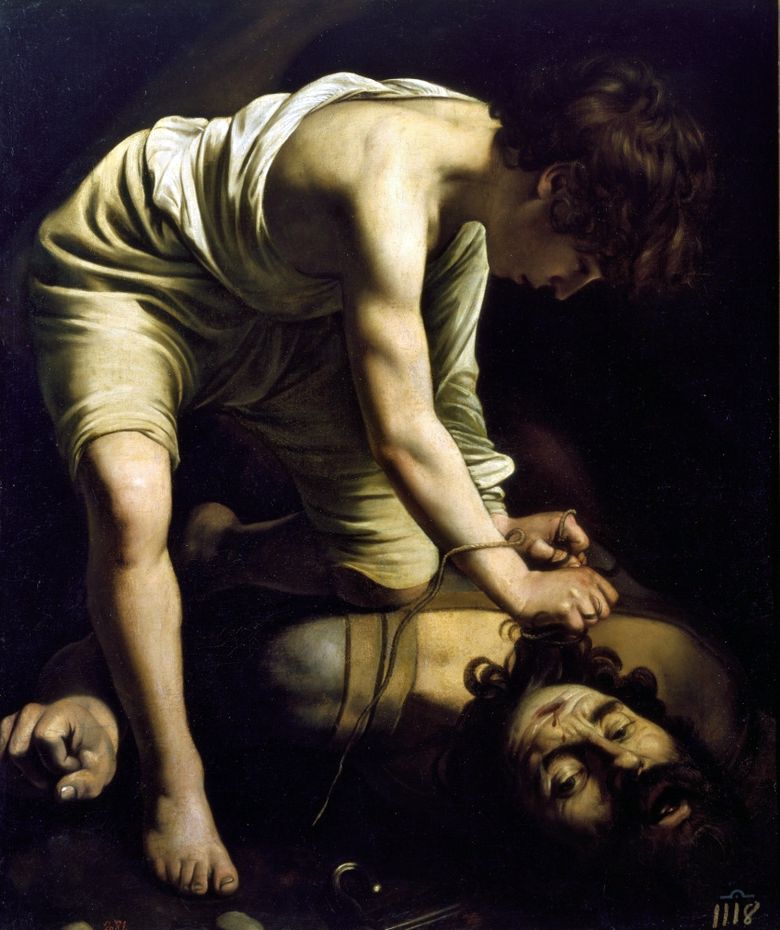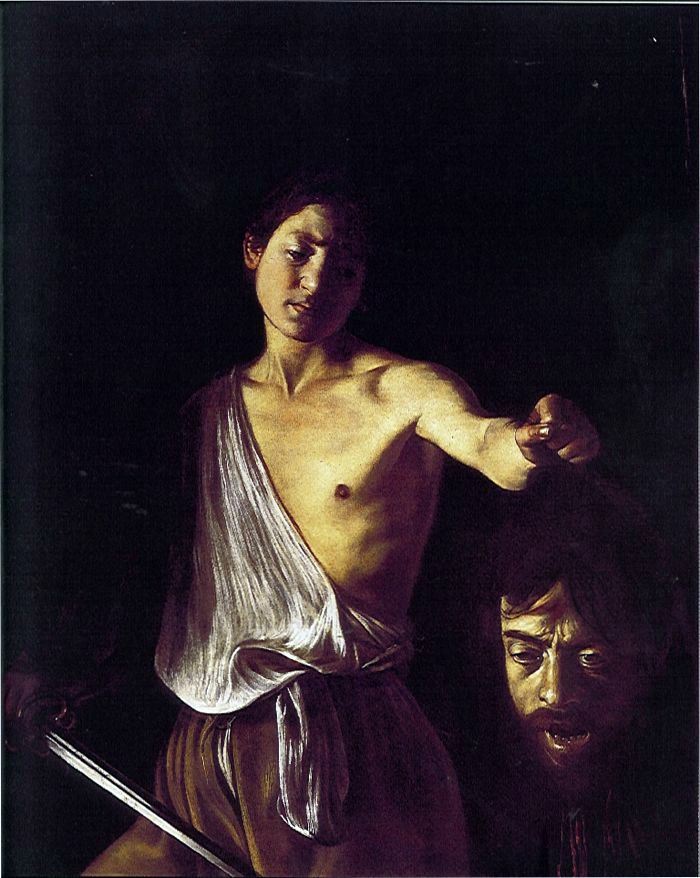
“David with the head of Goliath” – a picture of the Darwinian Caravaggio. It is a significant picture demonstrating many paradigms of art. Contemporaries, in the middle of the seventeenth century, claimed that in the picture both depicted heads, David and giant Goliath, are self-portraits of different stages of the artist’s life. However, only a few art historians noted the traits of Caravaggio in both faces. On the existence of the Goliath model there are disputes. The image of his face as a victim resorted to the namesake of Caravaggio – Michelangelo Buonarroti. His face is engraved on Bartholomew’s skin. Rembrandt tried to achieve the same artistry in motion as Caravaggio, in a self-portrait with a dead bittern.
In the eponymous work done by Caravaggio earlier, as a model of David used, it is believed, the model from the street. Probably in this work also the opinion that David is a self-portrait of the artist is erroneous.
In the hands of David, a regular blade that never served as a weapon. Before the battle with Goliath, he abandoned armor and weapons, using the blade only after the battle, to behead the defeated. Caravaggio could portray a heavy sword, but the hero gets an elegant and thin, like a brush, a dagger. The location of the sword implies an erect phallus. Michelangelo, Titian and other artists often used such sexual overtones in their works. The fact is that throughout the history of art, gender issues, painting and architecture have been closely related. The body and its functions revealed, as it was thought, the wisdom of the Divine plan.
David’s melancholic and contemplative look contrasts with frowning brows. Why does David look so thoughtful in such a horrible scene? Frown, of course, points to a deep thought. Melancholy borders on pity for the defeated. David, with all the dramatic expression of emotions, looks more like a loser, despite the obvious advantage. The general atmosphere of the picture reflects darkness, fear and sorrow. At the moment, the paintings are in the Museum of Art History, in Vienna. Only the early “David and Goliath” is kept in the Prado Museum.
 David with the Head of Goliath by Caravaggio
David with the Head of Goliath by Caravaggio David and Goliath by Michelangelo Merisi and Caravaggio
David and Goliath by Michelangelo Merisi and Caravaggio David con Goliath Head – Michelangelo Merisi da Caravaggio
David con Goliath Head – Michelangelo Merisi da Caravaggio David with the head of Goliath by Guido Reni
David with the head of Goliath by Guido Reni Salome with the head of John the Baptist by Michelangelo Merizi da Caravaggio
Salome with the head of John the Baptist by Michelangelo Merizi da Caravaggio David et Goliath – Michelangelo Merisi da Caravaggio
David et Goliath – Michelangelo Merisi da Caravaggio David à la tête de Goliath – Michelangelo Merisi da Caravaggio
David à la tête de Goliath – Michelangelo Merisi da Caravaggio The Conversion of Saul by Michelangelo Merizi da Caravaggio
The Conversion of Saul by Michelangelo Merizi da Caravaggio